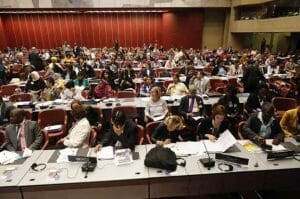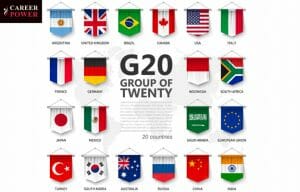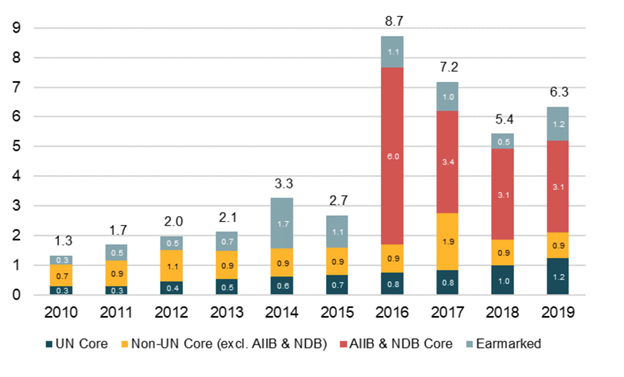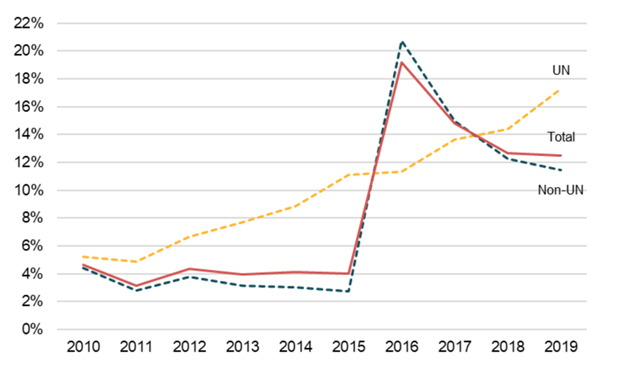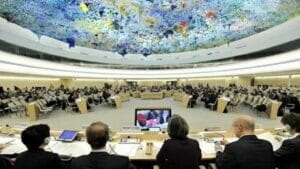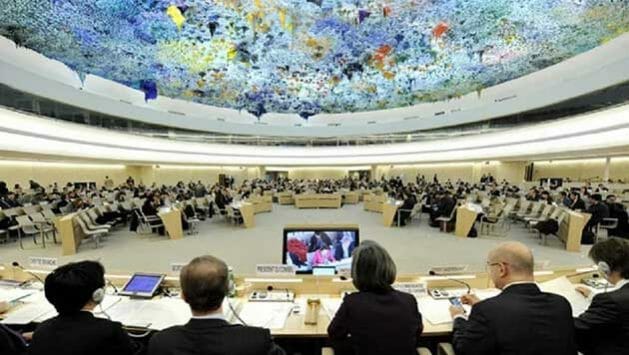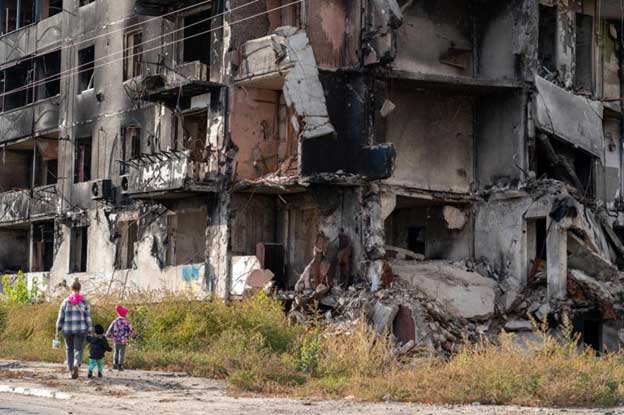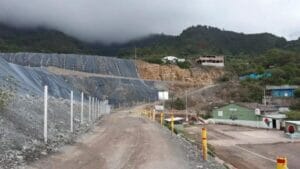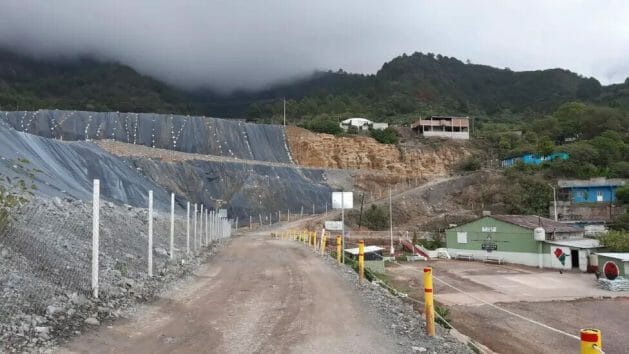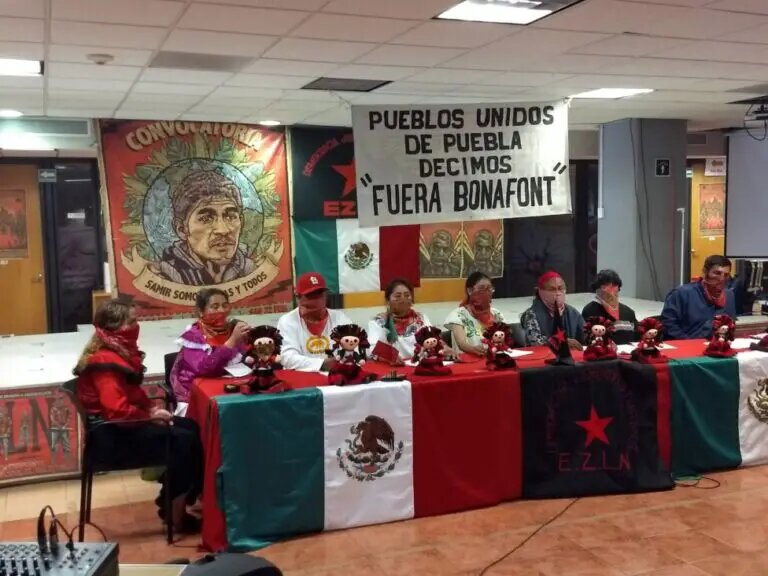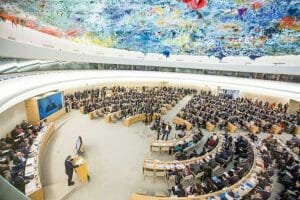

The open-ended intergovernmental working group on transnational corporations and other business enterprises with respect to human rights was established in 2014 in response to Human Rights Council resolution 26/9 with a mandate to elaborate an international legally binding instrument to regulate, in international human rights law, the activities of transnational corporations and other business enterprises.
By Simone Galimberti
KATHMANDU, Nepal, Mar 31 2023 (IPS)
The ongoing discussions on an internationally treaty, described as a “legally binding instrument” on business and human rights, remains one of the most neglected issues that should instead command the attention of the public.
Such a legal tool would bind companies to uphold high standards and most importantly, it would entail mandatory guarantees for accessible and inclusive remedy and therefore, clear liabilities for victims of alleged abuses perpetrated by companies.
It all started in 2014 when two nations of the South, Ecuador and South Africa successfully pushed for a resolution at the UN Human Rights Council on the establishment of a so called “international legally binding instrument on transnational corporations and other business enterprises with respect to human rights”.
By reading the title of the resolution you can immediately realize that one of the conundrums being discussed is the overarching scope of such treaty especially in the reference of the nature of the companies being subject to it.
In practice, would only multinational or also national private corporations come under its jurisdiction?
Interestingly, at the Intergovernmental Working Group (IGWG) created to draft the text of the treaty, many developing nations, for example, like Indonesia, were strongly advocating for only multinationals to be included.
This is a position of convenience that would exclude local major operators involved in the plantations business from coming under scrutiny of the treaty.
Other complex issues are centered on the liability especially in relation to instances where a corporation is “only” directly linked to the harm rather than cause.
As explained by Tara Van Ho, a lecturer at the University of Essex School of Law and Human Rights Centre, if “a business is only “directly linked to” the harm, it does not need to provide remedies but can instead use its “leverage” to affect change in its business partners.”
The difference between causing or contributing to harm and instead being only liked to it can be subtle and remain an exclusive debate among scholars, but its repercussions could or could not ensure justice to millions of people victims of corporate abuses.
Another point of attrition is the complex issue of the statutes of limitations and the role of domestic jurisdiction over the future treaty.
With all these challenges, after 8 years of negotiations, the drafting is moving in slow motion amid a general disinterest among state parties, as explained by Elodie Aba for Business & Human Rights Resource Centre
An issue that should capture global attention has instead become a realm of technical discussions among governments, academicians and civil society members without generating mass awareness about it.
The need for a treaty related to abuses of corporations is almost self-evident, considering the gigantic proofs that have been emerging both in the North and South.
Despite nice words and token initiatives, the private sector has been more than often keen to close its eyes before abuses occurring through its direct actions or throughout its supply chains.
Amid weak legislations, especially in developing countries, the hard job of trying to keep companies accountable, until now, has depended on a set of non-binding, voluntary procedures formally known as the Guiding Principles on Business and Human Rights.
The Principles, prepared by late Harvard Professor John G. Ruggie in his capacity as UN Special Representative on Business and Human Rights, proved to be a useful but at the same time inadequate tool.
It has been useful because it was instrumental in raising the issue of human rights within the corporate sector, something that was for too long and till recently, a taboo.
In order to further mainstream it, for example, a UN Working Group on Business and Human Rights has been established as a special procedure within UN Human Rights.
Along the years, this independent group, composed by pro bono academicians, has carried out considerable work to strengthen both the understanding of and the adherence to the Principles.
There is no doubt that there have been attempts at going deeper, especially from the legal point of view on the Principles, especially on their articles related to right to remedy, the thorniest issue.
In this regard, the Accountability and Remedy Project have been providing a whole set of insights through multiple consultations and discussions, a process that still ongoing with the overall purpose of making a stronger cases on “the right to remedy, a core tenet of the international human rights system”.
Yet principles, UN Global Compact, are toothless tool and showed considerable limitations, starting from the most obvious element, the fact that they are not binding.
In the meantime, in 2021 the UN Working Group on Business and Human Rights, on occasion of their 10th anniversary of the Principles, launched road map for the next 10 years.
It is actions, despite their intrinsic limitations due to the nature of the Principles, should be supported but more financial resources are indispensable. Yet finding the financial resources or better the political will to do so remains an issue.
A recommendation from late Prof. Ruggie to create a Voluntary Fund for Business and Human Rights did not go anywhere.
“The Fund would provide a mechanism for supporting projects developed at local and national levels that would increase the capacity of governments to fulfill their obligations in this area as well as strengthen efforts by business enterprises and associations, trade unions, non-governmental organizations and others seeking to advance implementation of the Guiding Principles”.
Even more worrisome is the fact that till now a new Special Representative for Business and Human Rights has not been appointed yet.
Having an authoritative figure, especially a former head of state rather than an academician, could help bring more visibility to the ongoing “behind the curtain” discussions related to the need for a strong Treaty.
Such a political figure could not only command a stronger attention on the issue but also provide “cover” to the delicate work of the UN Working Group on Business and Human Rights, complementing and strengthening its mandate.
Engagement with the education sector, law and business schools, as advocated by a report published by Business and Human Rights Asia, a UNDP Program, can be essential.
Together with a stronger media coverage, students and academicians can help elevate the issue of human rights and its linkages with the private sector.
We could imagine competitions among students at national and international levels on how the principles can be better implemented as a “bridge” tool towards a binding legal mechanism.
Students could also have a major say on the opaque drafting process of this treaty.
At the end of the day, there will be compromises and shortcomings, but with a bigger bottom-up approach, a strong Treaty could become a “global” Escazu’, the first ever binding environment agreement in Latin America and the Caribbean.
UNDP with its Business and Human Rights Asia unit that recently organized in Kathmandu an excellent 4th UN South Asia Forum on Business and Human Rights. But it could also be bolder.
The forum did a great job at giving voice to indigenous people, one of the key stakeholders in the global negotiations for the treaty.
A lot of discussions were rightly held on the impact of issues like climate change and migration and their links with businesses’ attitudes and behaviors towards local populations.
Yet, there was no conversation nor on the treaty nor on the future evolution of the principles. It might certainly be an issue of a limited “mandate” but UNDP could, together with UN Human Rights, be a neutral enabler on a global discussion on the treaty and on how the Principles can further evolve while we wait for such a legal tool.
The Principles should also be better linked with the UN Compact, creating more synergies and coordination between the two.
The fact that nations like France, Germany and the Netherlands have been stepping up with new vigorous legislations in the field of business and human rights is extremely positive.
Equally important is the commitment of the EU to come up with Corporate Sustainability Due Diligence Directive (CSDDD) or the OECD to revise its Guidelines on Responsible Business Conduct but the nations behind these initiatives must commit to the drafting process of the Treaty.
Otherwise, we run the risk that discussions will continue without anyone caring about them. Such an unfortunate situation must truly be “remedied’ with the right smart mix, political will, starting from the Secretary General and a powerful alliance of progressive nations in the both South and North driving the process and involving other peer nations.
Ultimately civil society must also step up beyond their technical and legal recommendations and truly engage the people.
Simone Galimberti is the co-founder of ENGAGE and of the Good Leadership, Good for You & Good for the Society.
Opinions expressed are personal.
IPS UN Bureau

